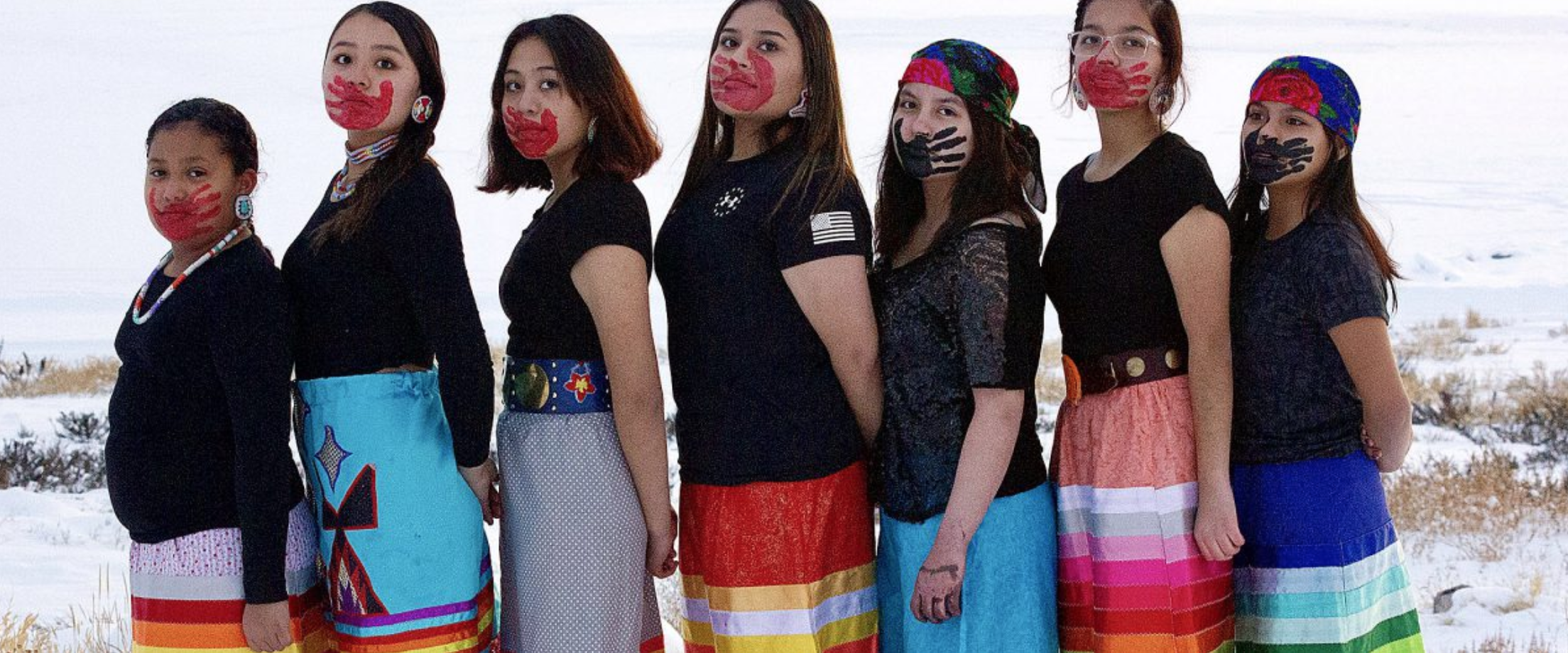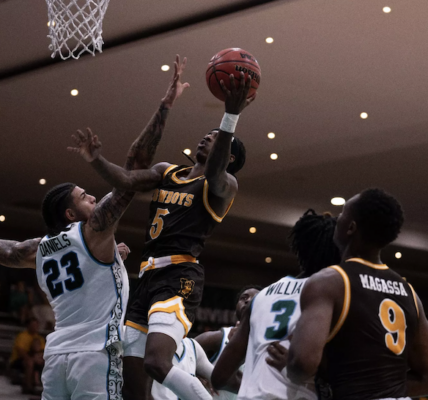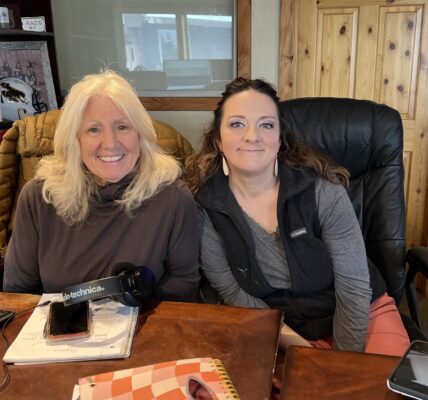Missing and murdered Indigenous people issue continues to plague Wyoming

By Barbara Anne Greene
Greybull Standard
Via- Wyoming News Exchange
GREYBULL —With all the national coverage of her disappearance and the discovery of her body in Wyoming, the name of Gabby Petito is familiar to most.
Yet in Wyoming, people — notably Indigenous women, but also men, including white men — have gone missing, too. Their stories and names rarely make national headlines.
Every day, Cara Chambers asks herself why.
Chambers is the director of the Division of Victim Services in the Office of the Wyoming Attorney General. She is also the chair of Gov. Mark Gordon’s Missing and Murdered Indigenous Persons Task Force. The task force was formed in 2019 and released its first report in January of 2021.
She has received numerous requests from national media for interviews, but “sadly” only a few from Wyoming media, she said, which, she added, is a part of the problem.
Chambers said the task force came about when she and Gordon attended an awareness event for missing and murdered Indigenous women and girls in April of 2019. The Student’s Indigenous Organization Keepers of the Fire put on the event.
Lynnette Grey Bull was also at the event. Grey Bull runs Not Our Native Daughters and ran for U.S. Congress in 2020.
At the event, Grey Bull asked Gordon about starting a task force. On the spot, Gordon said yes.
After two public meetings, including one on the Wind River Reservation, the task force realized it had a big responsibility to get it right.
“I realized we didn’t know what we didn’t know,” said Chambers. “We didn’t have data. We didn’t know what the story was going to look like. I say story because these just are numbers and widgets. These are people, victims and families that had been overlooked.”
The Wyoming Survey and Analysis Center (Wy-SAC) out of the University of Wyoming was brought in to do the research for the task force. WySAC is the state’s only Wyoming statistical analysis center recognized by the Department of Justice.
Chambers said it was important to use Wy-SAC, as federal funds were being used to support the project.
The task force gave WySAC a copy of Canada’s report on Missing & Murdered Indigenous Women and Girls (MMIWF). Canada was the first country to create such a report.
The Wyoming task force also looked at the State of Washington’s report, which was law enforcement based. Both the Canadian and Washington reports were given to WySAC.
“We sent them off with a really open book,” Chambers said. “We knew we couldn’t move forward until we knew where we had been.
“A couple of things came out of the report. We realized we don’t have good data on Indigenous crime,” she added. “There are a couple of reasons for that. That’s not blame. It is reality.
“There is federal law enforcement that has oversight over the reservation. Whether it is BIA (Bureau of Indian Affairs) through the Wind River Police Department or the FBI. We did have some state data, but we didn’t have the whole picture.”
One of the things that came out before the study was published was that a state level law was needed to allow cooperation among state, federal, local and tribal law enforcement. A law was introduced and passed in 2020. It is SF0008. This allowed for sharing of data and resources between each agency.
The report found that 105 Indigenous people (34 females and 71 males) were victims of homicide in Wyoming between 2000 and 2020. These Indigenous victims were 21% of the total homicide victims in Wyoming during the same time period. Indigenous people make up 3% of Wyoming’s population.
Between 2010 and 2019, the homicide rate per 100,000 for Indigenous people was 26.8. This is eight times higher than the homicide rate for white people. The homicide rate for Indigenous females was 15.3 per 100,000, which is 6.4 times higher than the homicide rate for white females.
Between 2011 and Sept. 2020, 710 Indigenous persons were reported missing.
At the time of the report, 10 were currently missing, including seven males and three females. Some were reported missing more than once during that time period, bringing the total reports of missing to 1,254.
Chambers said those reported more than once were most likely juvenile runaways.
The missing people came from 22 of Wyoming’s 23 counties. Around 50% were found within a week. Twenty-one percent had been missing for more than a month.
Currently, nine people are missing.
Chambers said that she believes that the numbers are actually higher, as some are never reported missing. This may come from a lack of trust in the system. It could also be because of the dynamic of the family, she said.
Only 30% of Indigenous homicide victims had news or media coverage as compared to 51% of white homicide victims. Indigenous female homicide victims had the least amount of news/media coverage (18%).
“When you look at those few stories and you compare them to the stories of their white counterparts, a whole other picture emerged,” Chambers said. “Indigenous victims were far more likely to have negative character framing, and stories were far more graphic using more violent language, really just distilling the story down to a crime, a body, a location and in graphic detail — victim blaming language, that somehow they were responsible for their deaths.
“You didn’t see that in the white victims,” she said. “You saw much more positive framing. The articles focused on them as a person, loving family member, loved rodeo, etc. These stories were also more likely to be written while they were still missing, which, as we know, can increase the likelihood of them being found.
“In fact, the stories have contributed to the discovery of their remains, as it did with Gabby.”
Chambers said the Governor’s Office and her office are heartbroken for the Petito family.
“Pointing out that Gabby’s case got so much attention while Indigenous people have not is not trying to take anything away from Gabby,” she said. “We’re just saying there is enough to go around. Everyone needs to be treated the same. When you think about all the attention and how quickly she was found, that is breakneck speed for cases like this.
“We have Indigenous families on our reservations who have been waiting 20-30 years,” she added.
There are ways for those who don’t live on a reservation and are not Indigenous to help.
“Be an ally,” she said. “If you are not a member of that community, it may be very hard to step outside yourself and understand what these Indigenous families are going through. That doesn’t stop any of us coming alongside as an ally and asking ourselves why was Gabby’s case more compelling than our own women of Wyoming?
“Gabby was coming through here. We have our own Wyoming women, girls, men and boys that go missing. This is in our own backyard.
“Your paper and Wyoming Public Radio are the first Wyoming media that have reached out to me to do interviews,” Chambers said. “The Wyoming Public Radio story did get picked up by the National Public Radio and ran more on their stations than it did in Wyoming, which is a part of the problem.”
Chambers also suggests that people read the report. It can be found at https://wysac.uwyo.edu/ wysac/







